Why Oregon’s International Pinot Noir Celebration really matters
Great wine captures the spirit of a place. But that place isn’t just the landscape or the climate; it’s the people too. Few wine regions make that point as powerfully as Oregon. Gabriel Stone reports.
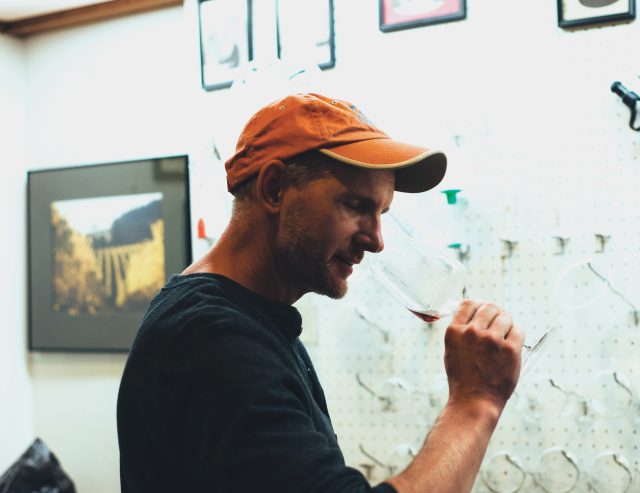
There are plenty of beautiful locations on this planet to make wine, but it’s hard to think of any that exude quite the same collegiate spirit as this corner of the Pacific North West.
Visit a winery here and your host is just as likely to talk enthusiastically about what the neighbours are doing. Heck, they’ll probably drag you over the road to see it for yourself.
Celebration
Many people over the decades have taken their first sip of Oregon wine culture thanks to the International Pinot Noir Celebration. This pilgrimage for Pinotphiles first took place in 1987, just as the modern Oregon wine industry was finding its feet.
Ever since, this annual McMinnville gathering has provided the host region with not only an invaluable showcase opportunity for its present but, perhaps even more importantly, the connections that have nurtured an even more exciting future. That relationship brought real poignancy to the announcement that IPNC 2024 would be the last “in its current form”.
Few can have quite the same depth of perspective on what this event has meant to the Oregon wine community as Jason Lett of Eyrie Vineyards. In 1965 his father David defied sceptics and financial constraints to plant Pinot Noir in the Willamette Valley. “For us Burgundy is as Rome is for Catholics,” begins Lett.
“It’s where we go for spiritual enrichment and also to understand the deeper roots of what we do. IPNC was important because it helped cement the relationship with Burgundy in a much more formal way.”
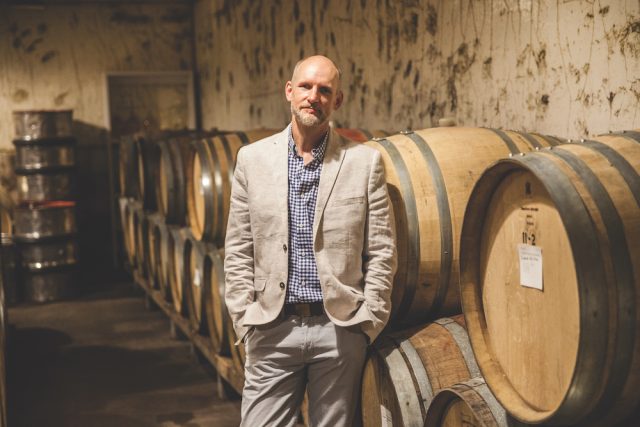
Drouhin
It must have been a great vote of confidence for those Oregon pioneers to welcome the likes of Dominique Lafon and Robert Drouhin, both of whom subsequently became involved in their own ventures here.
In fact, it was during his visit for the inaugural IPNC that Drouhin agreed to buy a parcel of land in the Dundee Hills that would soon become Domaine Drouhin.
When the news reached Lett, he was actually in Burgundy working for none other than Maison Joseph Drouhin.
“[Robert’s daughter] Véronique had worked for us the year before so there was a bit of a familial exchange,” he recalls.
The very personal connection to IPNC runs still deeper than that though. A few years later Lett was working in south-eastern Oregon when he met an archaeology intern called Diane. “I tried to play it very cool but eventually I said: ‘My parents are part of a little wine event in town, would you like to come?’” he recalls. “She had no idea what she was in for but was absolutely delighted by what was going on. That was a good introduction to the family.”
Today the Oregon wine scene is in many respects a world away from those early days. Everyone from Jackson Family Wines to Constellation Brands and luxury powerhouse Artémis Domaines now has a stake here, not to mention a strong Burgundian cohort that includes Jean-Nicholas Méo and Maison Louis Jadot.
This latter group in particular is all too aware of how international success can threaten the original character that made a region so attractive in the first place.
Inevitably some new arrivals will inhale what Lett calls “the Oregon mist” more deeply than others.
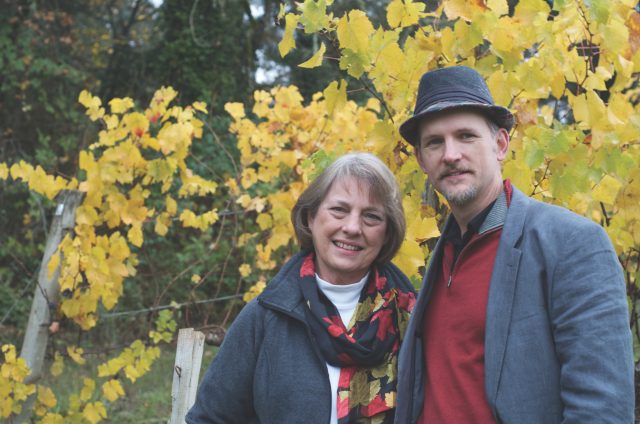
Risks
“I think we’re seeing a bifurcation of the Oregon industry in terms of those who take risks and those who don’t,” he suggests. “There are still plenty of winemakers in Oregon who are taking risks, generally young people, often sommeliers who set up in a shed making Pinot Noir in amphora bottled under a full moon. There’s still a sense of adventure, that this is a place where you come to make mistakes and do better.”
What has changed is the shape and consequences of that risk-taking mentality. “When my parents started there was no opportunity to get a loan from the bank; growing grapes was far too risky,” Lett explains.
“That meant when you lost your winery, you lost your house. Now when a winery is in distress there are willing buyers to help you out. That’s a real safety net.”
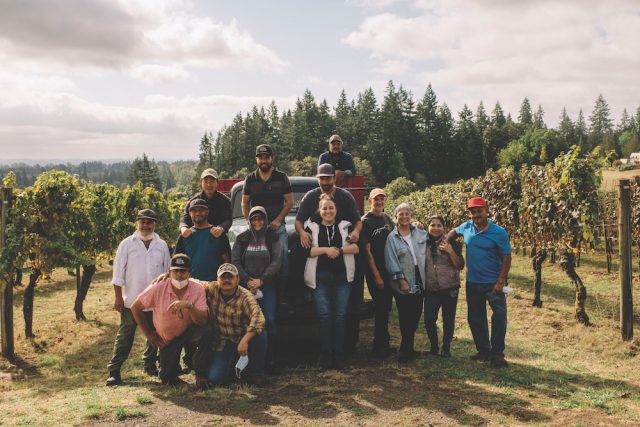
Banks
It may be easier to get into the wine business these days, but often at the expense of the very freedom and sense of curiosity that inspired this move. Banks are more likely to give you a loan but, Lett points out, “they’ll tell you that you can only plant Pinot Noir or Chardonnay, what clones you can use and not even just whether you irrigate but how you irrigate.”
Of course, Eyrie is now in a rather different place to those people just beginning their Oregon wine journey. It’s almost six decades since the producer’s first harvest and Lett himself is about to mark his 20th vintage at the helm. The milestone has crept up surreptitiously. “It’s a very cyclical job; you do the same things at the same time every year,” he observes. “That’s an incredible comfort but it does lead to things blurring. It’s hard to believe it’s been 20 years.”
While that timeframe and second generation status creates a secure sense of rhythm, there’s also a reassuring restlessness to Lett’s mindset. “I no longer have the youthful exuberance I once had, but I remain curious. I’m not ready to sit on any laurels,” he insists.
That’s not to say Lett isn’t immune to the allure of reposing on Eyrie’s well-earned reputation. “The greatest temptation is ease,” he admits. “It would be so easy to pare down the varieties that we make and only grow Pinot Noir, Chardonnay and Pinot Gris. I know that immediately we could increase our scores by employing more new oak, hire folks with the sort of technical acumen to do that well and step away,” muses Lett. “That’s the temptation, to take the easy path, but that’s so counter to what has always defined Eyrie.”
That Eyrie spirit was shared by many of the families who shaped this state’s wine industry. Lett observes that, in contrast to today, “the first people making wine in Oregon didn’t have degrees in winemaking but in things like divinity or literature.”
Vintages
That invariably meant their early vintages were less accomplished than is the case for young ventures now, but that intellectual foundation had other advantages. “They used their background to build connections with European winemakers,” explains Lett.
Partner Content
He picks out David Adelsheim’s German Literature major, which proved invaluable for building links with Geisenheim University to obtain better vineyard material.
“Curiosity defines our region,” sums up Lett.
How to satisfy that curiosity is a different challenge, especially when your family business did so much to create the Oregon wine template in the first place. “One of the things I did not anticipate was how much history would overshadow what I and the team are doing now,” admits Lett.
“Everything we do now is still attributed to my father and fair enough, we wouldn’t be here without him, but the fact is that Eyrie is a living entity; it’s not stuck in amber.”
That fluidity can be seen in the way Lett has guided Eyrie beyond its original Burgundian inspiration to explore more offbeat channels.
“I take such great joy from drinking Chasselas,” enthuses Lett. “It’s a delightful, low alcohol wine that’s so on-trend. It’s perfect for where wine culture is taking us right now.”
In true Oregonian style, he immediately cites recent accolades, not for his own wine, but for another Chasselas made by fellow Willamette producer Laurel Ridge.
Then there’s the Jura grape Trousseau, first planted at Eyrie in 2012 – by chance the same year that Burgundy star Marquis d’Angerville made its own leap from Volnay to Arbois with the acquisition of Domaine du Pélican.
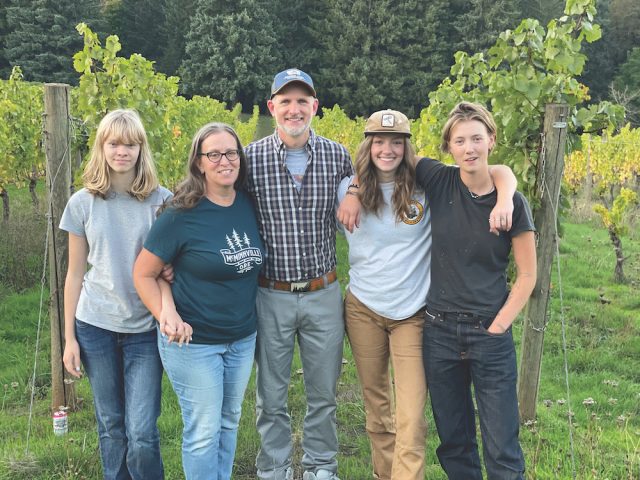
Love affair
For Lett, the rather greater geographical barrier meant this love affair took time to ignite. His initial Trousseau interest was sparked by tasting some of the few examples that made it as far as Portland, “but there was no way I would plant it without seeing the region.” Eventually the opportunity arose for “a lightening three-day expedition.”
It wasn’t just tastings with local producers that convinced Lett to take the plunge. “I saw the ecology there – the climate, the pine trees, the grasses, the honey – was so reminiscent of Willamette Valley,” he explains.
Now, a decade or so down the line, Lett feels that his original vision is close to fulfilment. “Our 2021 and ‘22 is getting very close to that idea,” he suggests, “that crazy, mossy gaminess and intense fruit.”
So caught between the Pinot Noir legacy and a Trousseau mission he has made his own, what would Lett choose as his Eyrie desert island wine?
“A 1973 Pinot… Meunier,” he teases. “Because Pinot Meunier is so underappreciated, even in Champagne. They say it has no acidity and no ability to age, but we find exactly the opposite.” In the vineyard too, Lett is struck by Pinot Meunier’s attributes.
“In springtime when frosts threaten, the light, downy hair on its leaves gives the buds a little woolly jacket,” he explains. “Then sometimes when it’s dry and warm, those hairs help to retain humidity.”
History
That’s not the only useful observation that has come from paying close attention in the vineyard. What worked best 60 years ago is not necessarily the case today. “We’ve changed our orientation,” says Lett on the subject of new vineyard plantings. “Now we plant east to west so the sun travels over the top of the vines.”
While his parents hedged their bets by planting the original vineyard on two orientations, Lett notes: “the east to west rows were invariably blended in the estate wines; now they’re invariably blended in our reserve.” Meanwhile the average picking date has shifted by a whole three weeks, from 5 October to 15 September.
“The whole thing has ratcheted back,” comments Lett. “Fermentation chemistry has also changed because of the warmth. We’re still trying to figure out what that means. I wish I had more time.”
It doesn’t help that his time is also tied up with other schemes. These include “blowing the dust off my plant sciences background and starting my own tissue culture lab to create vines without viruses.”
It may have served a purpose in many young wine regions’ “Wild West” phase but, as Lett puts it, “I’m not a fan of the ‘suitcase’ method of importing vine material.” In keeping with that Jura affinity, this focus is particularly inspired by “little valleys in the Alps with autochthonous varieties that never see the light of day outside those valleys.”
It’s also, of course, a pursuit very much in keeping with the intellectual curiosity that provided such a solid foundation for Oregon’s wine industry. But Lett is all too aware that this defining attribute would wither without other people and the exchange of ideas. “It’s the community and those connections outwards,” he insists.
“That’s the most intriguing thing about this world.”
An Oregon and Eyrie timeline
1965 – David Lett plants the Willamette Valley’s first Pinot Noir.
1970 – The first Eyrie Vineyards vintage.
1973 – A group led by David Lett and David Adelsheim maps out the primary vineyard zones of the northern Willamette Valley, lobbying successfully to protect them from developers.
1977 – Oregon’s winemakers propose the strictest labelling laws in the US.
1979 – The Eyrie Vineyards 1975 South Block Reserve makes the top 10 in a blind tasting at the Gault-Millau Wine Olympiad in Paris.
1980 – David Lett, David Adelsheim and Dick Erath petition the state department of agriculture to create a wine commission.
1983 – The Willamette Valley AVA becomes Oregon’s first AVA.
1987 – The inaugural International Pinot Noir Celebration brings some of the world’s top Pinot Noir producers to McMinnville.
1988 – The first vintage for Domaine Drouhin, founded by Burgundy’s Drouhin family.
2005 – Jason Lett takes charge of his first Eyrie harvest.
Today the Oregon Wine Board records 995 wineries in Oregon and just under 16,000 hectares of vineyard, of which 59% is Pinot Noir.
Related news
Treasury Wine Estates plans leaner future amid US and China slowdown
The db wine crime files 2025: part 2
Don't pour this Christmas drink down the sink, plumbers caution




